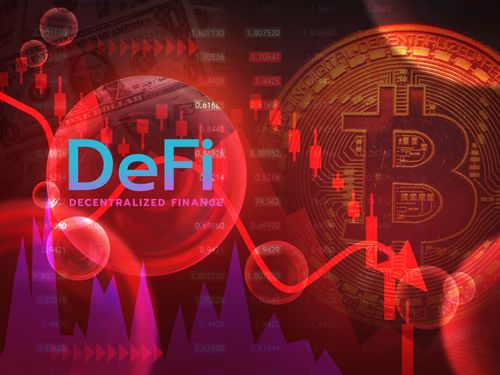Decentralized Finance (DeFi) has made a remarkable comeback in 2024, capturing the attention of investors and enthusiasts. The question on everyone's mind is: why is DeFi rising? This article explores the factors driving this resurgence and the trends shaping DeFi in 2024.
The Resurgence: Why is DeFi Rising in 2024?
DeFi, or decentralized finance, is a financial ecosystem designed on blockchain technology. It seeks to replicate conventional financial systems—those of lending, borrowing, and trading—without depending on centralized institutions like banks. Rather, DeFi systems offer open, transparent, and accessible financial services to anyone with an internet connection through the use of smart contracts on blockchains like Ethereum.
Several important elements have helped DeFi become rather popular recently. We discuss them in this article.
Rising institutional interest
Institutional investors, often referred to as "whales," are setting themselves up for the upcoming significant phase of the DeFi industry. A study by CryptoQuant indicates that these big holders are acquiring altcoins and making massive buy orders, predicting great future demand. Along with increasing market trust, this institutional interest gives DeFi platforms significant liquidity.
Technical Developments
There have been notable technological developments in the DeFi arena improving usability, scalability, and security. More advanced smart contracts, cross-chain interoperability, and layer-2 solutions—among other innovations, have strengthened and simplified DeFi platforms. These developments reduce entrance requirements and draw a larger audience, therefore helping the DeFi ecosystem to thrive generally.
Total Value Locked (TVL) and Active Loans
One of the most telling indicators of DeFi's resurgence is the increase in Total Value Locked (TVL) and active loans. As of mid-2024, TVL in DeFi protocols had surpassed $100 billion, a significant rise from the lows of 2023. Active loans have also returned to levels not seen since 2022, with over $13.3 billion in DeFi loans outstanding. This growth signifies increased trust and participation in DeFi platforms.
What are the DeFi Trends in 2024?
We have seen a number of DeFi trends in 2024, and they are characterized by several notable developments, such as:
Rise of DeFi Aggregators
DeFi aggregators, which consolidate multiple DeFi services into a single interface, are gaining popularity. These platforms simplify the user experience by offering a one-stop-shop for lending, borrowing, and trading. Aggregators are also leveraging AI and machine learning to provide users with the best possible rates and opportunities across various protocols.
Expansion into Traditional Finance
DeFi is increasingly bridging the gap with traditional finance. Hybrid models that combine the best of both worlds are emerging, offering new financial products that leverage blockchain technology while complying with traditional regulatory standards. This expansion is opening up new opportunities for both the DeFi and traditional finance sectors.
Focus on Security and Compliance
With the rise in DeFi adoption, security and compliance have become top priorities. Protocols are investing heavily in audits, bug bounties, and insurance funds to protect users' assets. Additionally, compliance measures are being implemented to ensure adherence to regulatory requirements, which helps in gaining the trust of a broader audience.
The Bottom Line
The resurgence of DeFi in 2024 can be attributed to increased institutional interest, technological advancements, and impressive growth in TVL and active loans. The current DeFi trend points towards a more integrated, secure, and user-friendly financial ecosystem. As the DeFi space continues to evolve, it holds the potential to redefine the global financial landscape, making financial services more accessible and efficient for all.

